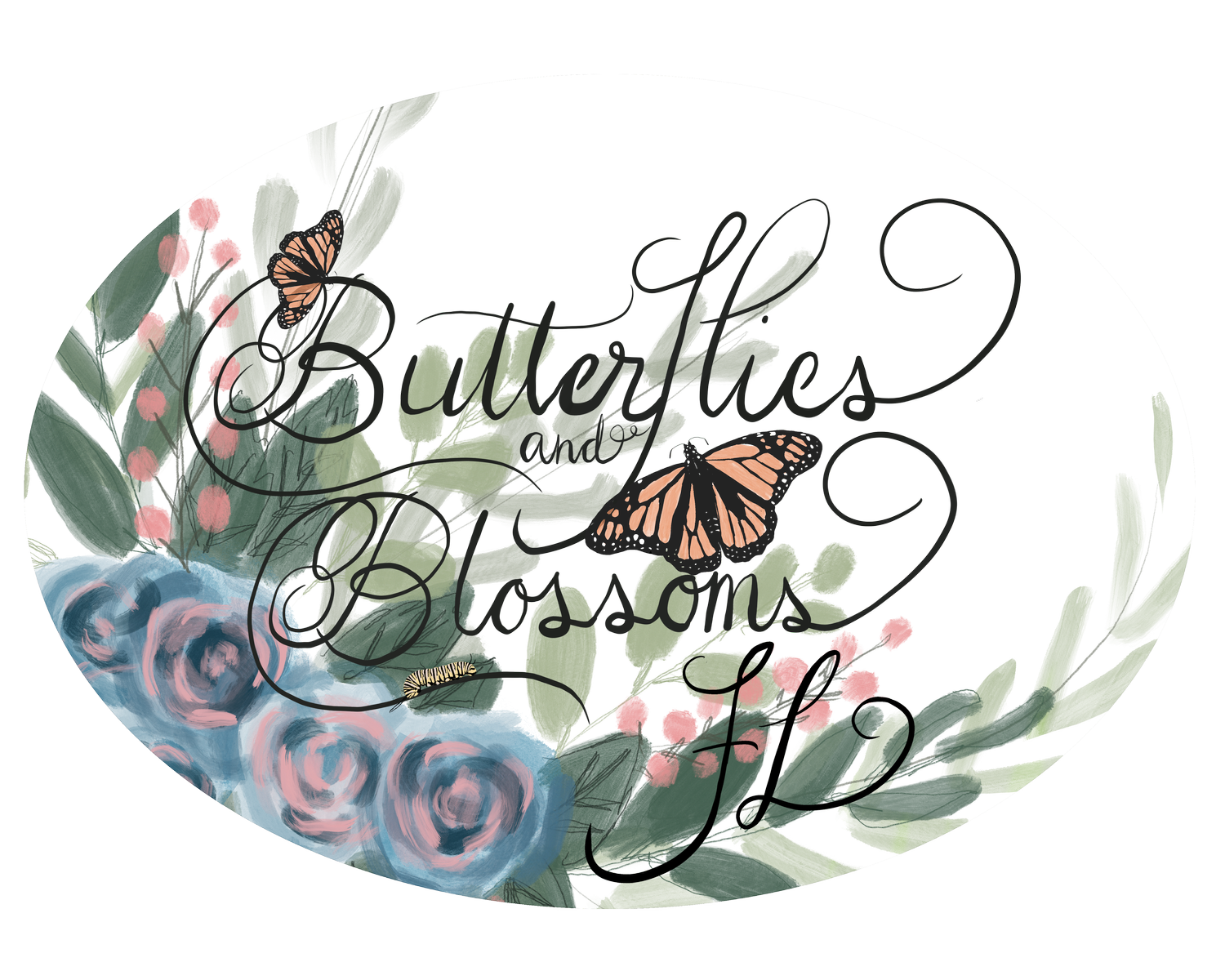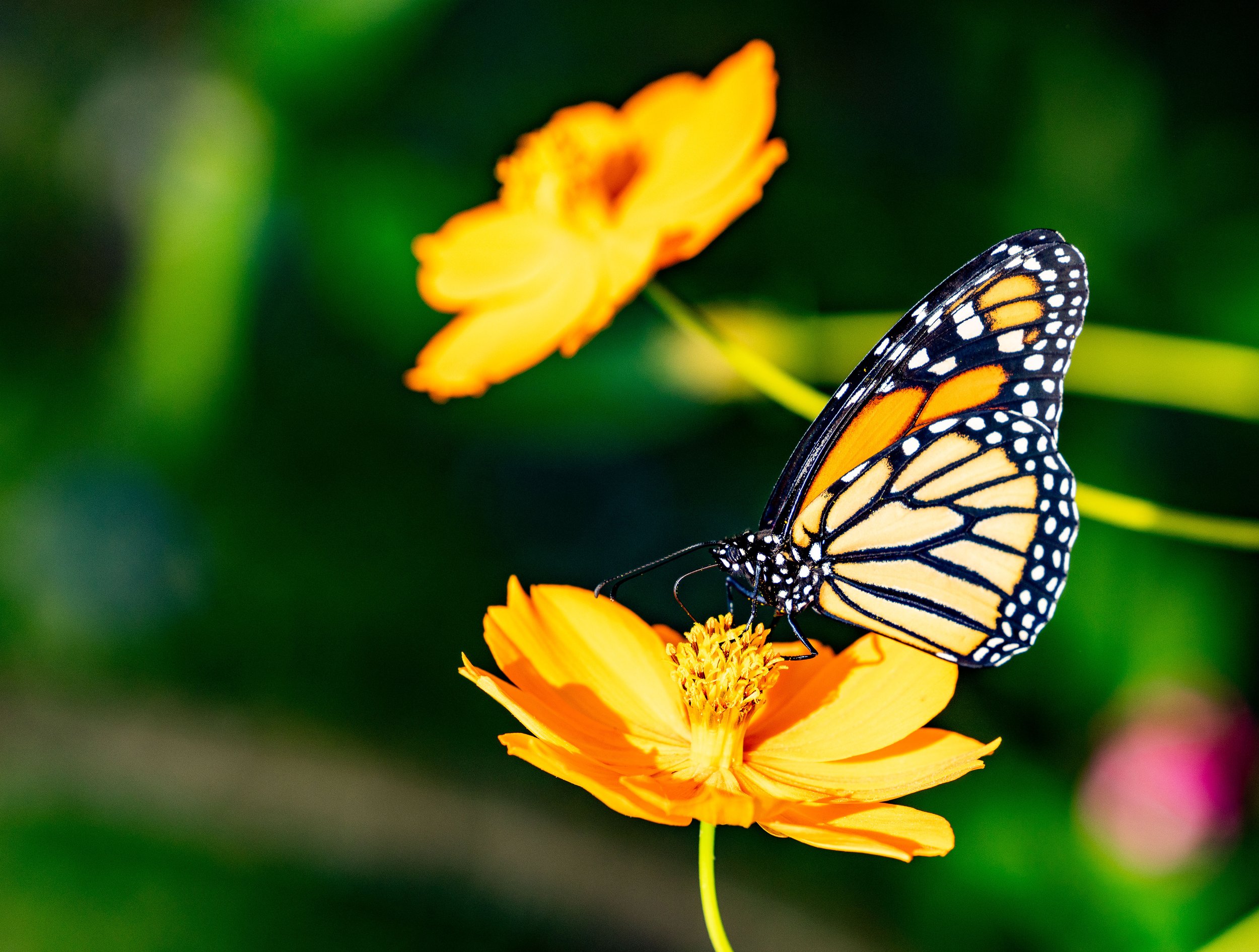Diary of a Gardener Butterflies, Bees and Save the Monarch
I love butterflies. I will chase a butterfly around my garden trying to capture its nectar from a plant. They are majestic, gentle, and yet so important. Creating a pollinator garden for myself and others is something I enjoy doing. I also enjoy teaching others about the importance of pollinators. When I say pollinators I mean butterflies, bees, and other pollinating insects. Often, I am asked to create a butterfly garden and met with the “but I don’t want bees.” After I cringe a bit and smile, I must gently tell the person, there is not one without the other.
A common misconception is bees are dangerous and if you are allergic that is a danger not taken lightly; however, bees do not sting just to sting. Wasp on the other hand may. Bees are often oblivious to you and just want to do their work… fastidious work. Unless met with the option of being squashed between you and the wall or your shirt, they are not likely to sting you. We (the world) need bees. We need them to pollinate our plants, but we need them to pollinate our food too. Pollinating insects pollinate one out of every three bites of food according to the USDA. They can live without us, but we humans cannot live without pollinators. We cease to exist without insects.
Creating a pollinator garden can be as simple as having one nectar plant and one host plant. What is a host plant? A host plant is a plant an organism (butterfly) can live on and off but will only lay its eggs and its caterpillars eat that plant and only that plant. I will use Milkweed for this example. Milkweed is the Monarch caterpillar’s only host plant. It finds it, lays its eggs and those eggs grow into little baby caterpillars. Those babies eat the milkweed, get fat, create frass (poop), crawl off somewhere else in the garden usually in plain sight, but rarely seen, and create their chrysalis. A few weeks later they emerge like Madam Butterfly. If it were only that simple.
Monarchs in Florida are having a rough time as of late. In Florida we have over twenty types of native milkweed. When planting milkweed you should plant ONLY what is native to your region. The two most common native milkweeds here are Asclepias incarnata and Asclepias perennis. Both have become increasingly easy to get, grow and keep alive. They do go dormant in the winter, which is normal since Monarchs would not be here in the winter, but due to our southern climate ours naturally do not migrate.
Sadly, there is another milkweed readily available, sold everywhere, literally everywhere, that is wreaking havoc on our Florida Monarchs. Tropical Milkweed, Asclepias curassavica. With its bright orange/red/yellow flowers and no dormancy it makes for an easy food source for our monarchs. BUT there is a problem. One, it is sold everywhere, in all garden centers and big box retailers. Second, due to its non-dormancy it encourages Monarchs to continue to lay eggs in the winter. Third, it contains a steroid that causes caterpillar deformities. But it also contains a parasite, Ophryocystis elektroscirrha (OE). The monarch eats tropical milkweed, ingests the parasite, flies around dropping spores of OE on all milkweed (native and non-native) spreading OE and thus infecting many Monarchs during their eating stages. Often the caterpillars meet an early death, the chrysalis never opens, or the Monarch comes out with deformities, thus meeting an early death. It is quite sad to witness. The problem is widespread and there are not any great solutions. The best solution is to remove ALL tropical milkweed from your landscape and start influencing with your dollar. Stop buying it from garden centers and ask your local garden centers to carry NATIVE milkweed ONLY.
I did not know this either for an exceptionally long time. I happily grew tropical milkweed until a few years ago when I realized I was harming not helping. When you know better, you do better. So, I am asking you to remove all tropical milkweed please also from your landscapes!
If you are unable to find native milkweed, try ordering seeds from someone in FL. Also use the Florida Native Plant Society to try and find sellers in your area. If you cannot find it locally, try purchasing online from a seller within the state. Ask your local garden centers to start carrying native milkweed. For my local area, I know of 4-5 people who carry it, including myself.
Want to know more about creating a pollinator garden and thus a haven for the Monarch butterfly, schedule a consult.

